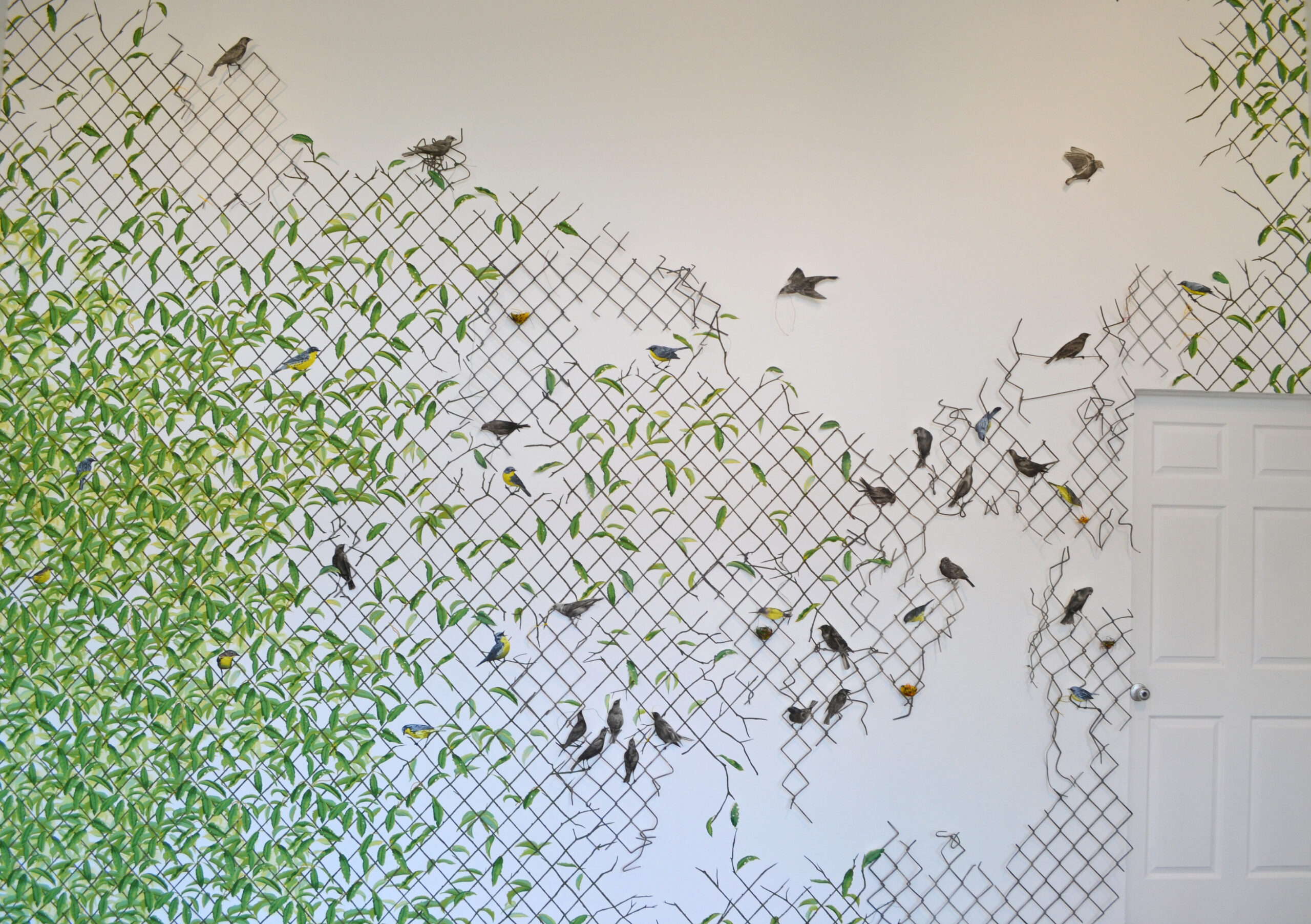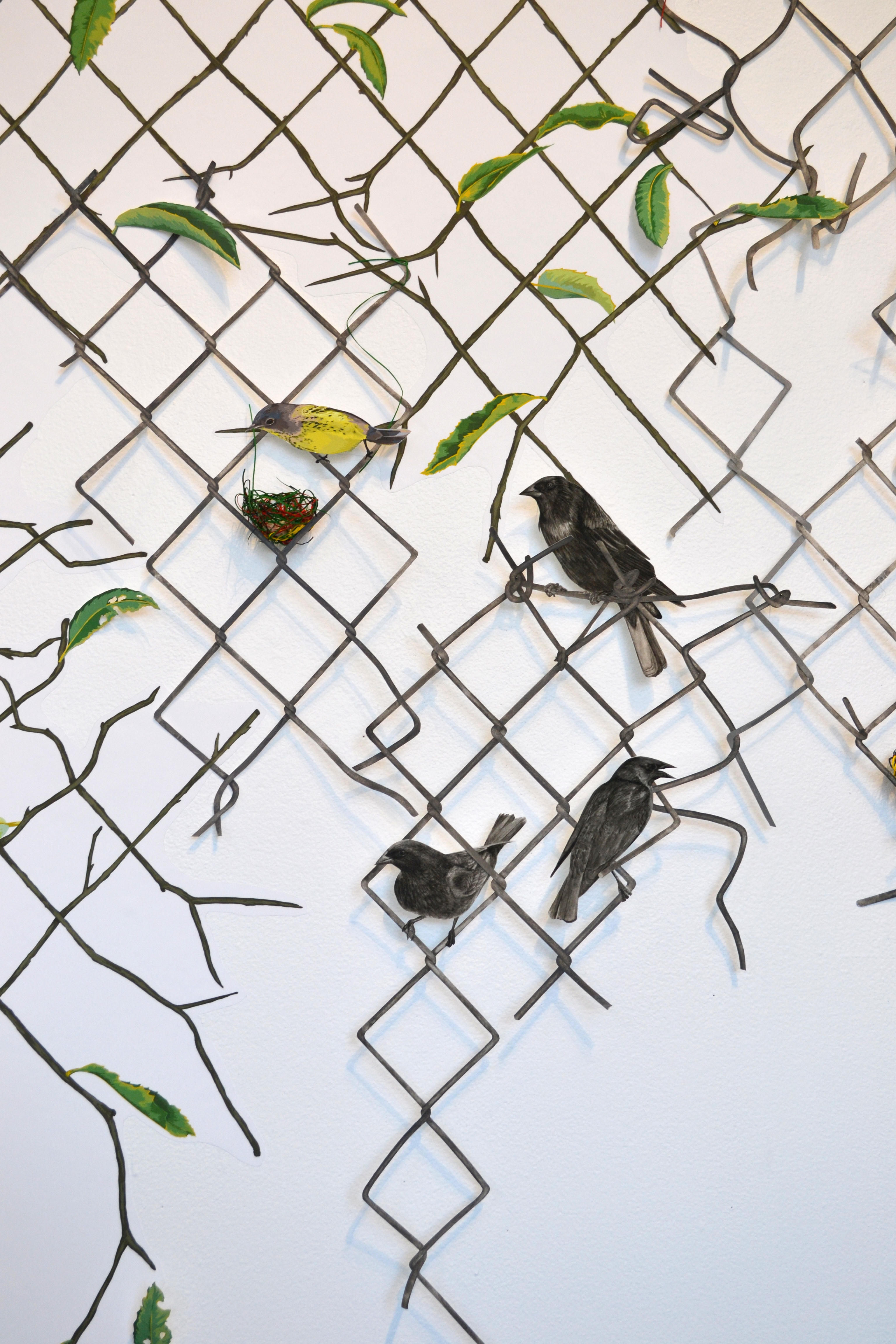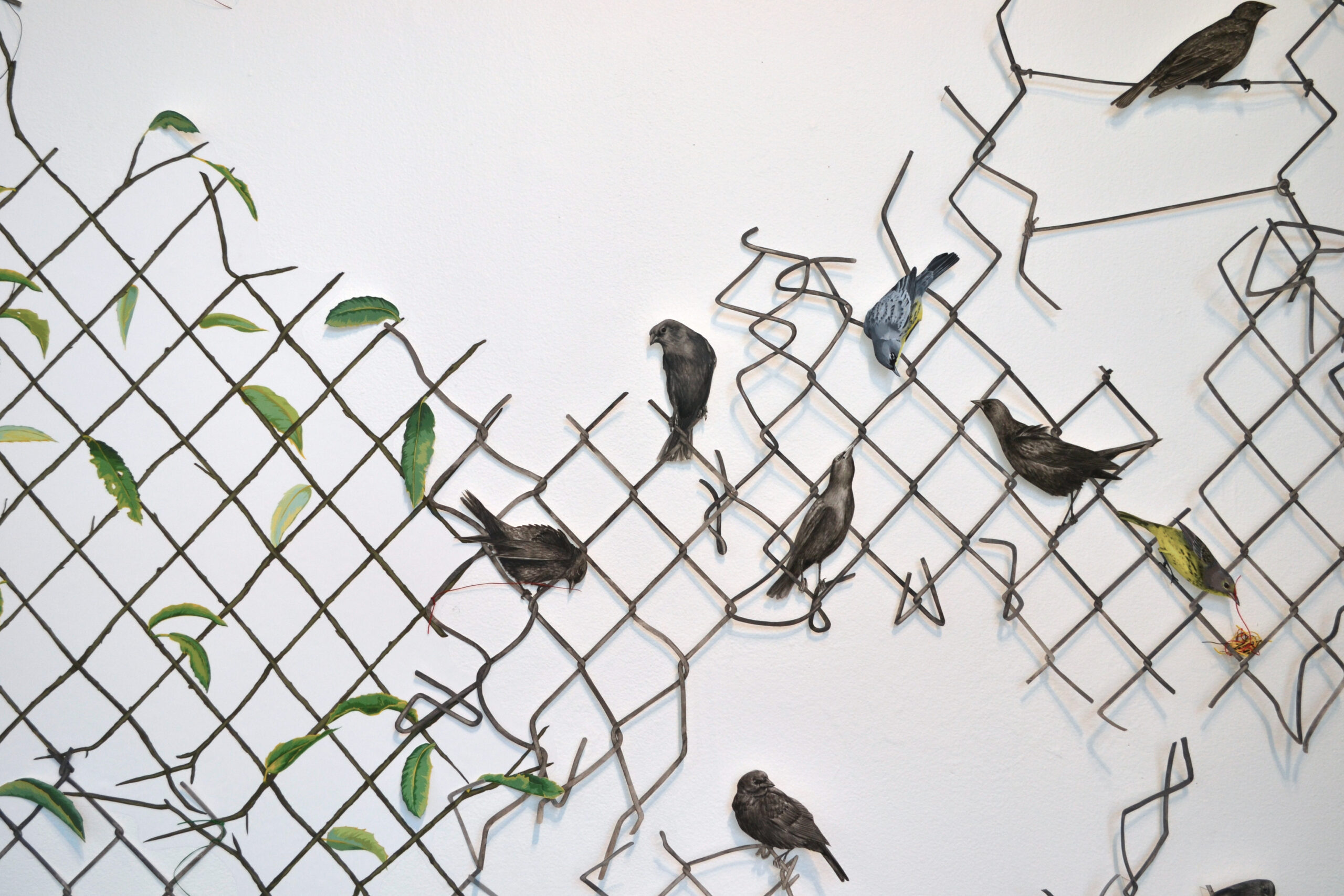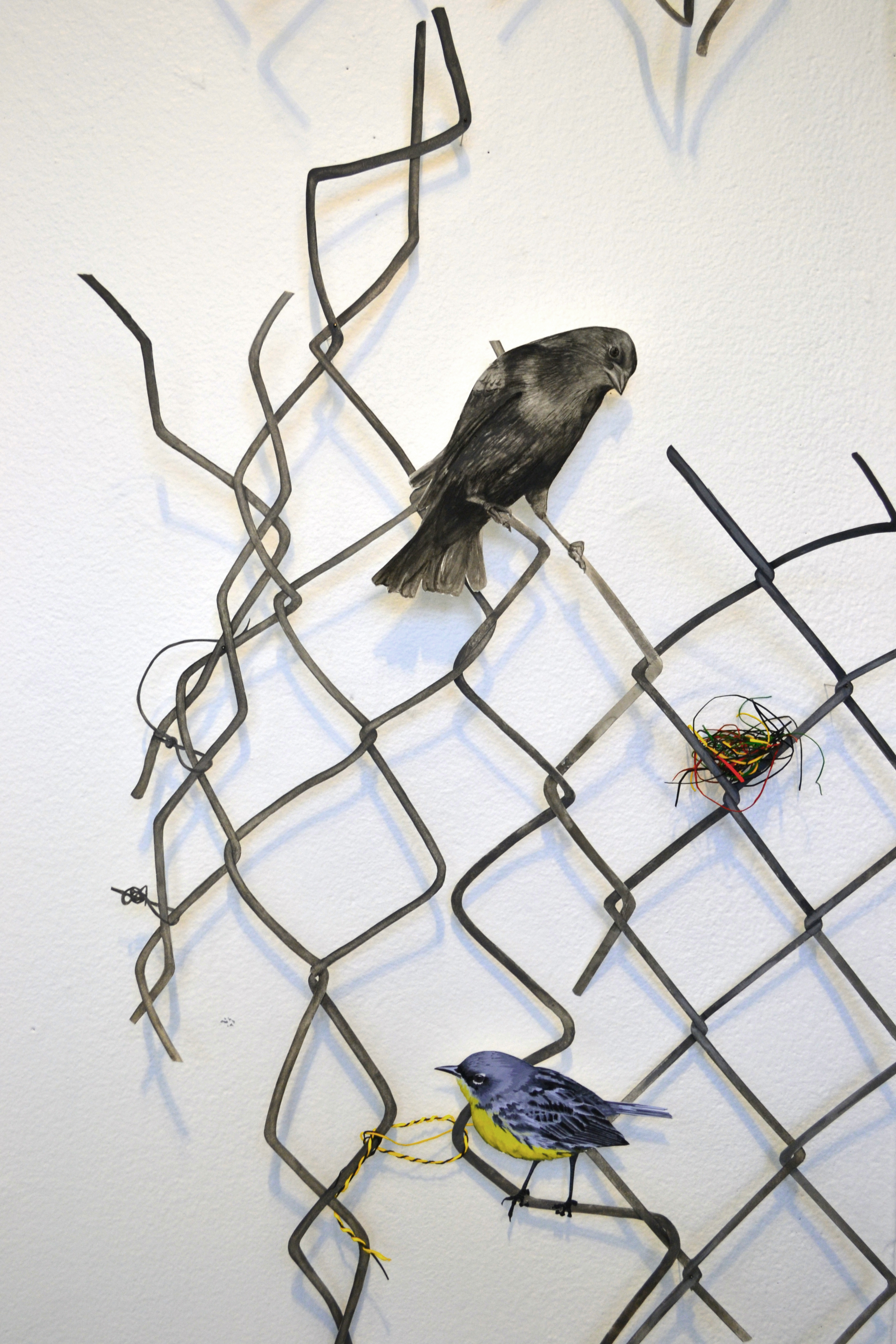Talia Greene
In my installation, Forest Colonies, I juxtapose the colonizing behaviors of both humans and animals, rejecting the binary that has separated humans from the rest of the animal kingdom, and instead situating us within the world of nature. At the same time, the project references a current human-made ecological crisis: the rapid decline of common birds in North America resulting from deforestation and climate change-induced habitat loss.
At one end of the installation—a leafy design inspired by murals, wallpapers, and naturalist illustrations from the late Colonialist period in Europe—depicts two rare American species: Kirtland’s Warbler, which has recently been removed from the endangered species list, and the American Chestnut, which is considered functionally extinct. As the pattern moves across the wall, the leaves and branches are replaced by chain link fencing inhabited by Cowbirds. The Cowbirds loom menacingly or weave the fencing into the branches with electrical wires, while nearby warblers remove the wires to build their nests.
Cowbirds, though also native to America, have colonizing and invasive behaviors, laying their eggs in other birds’ nests. The brood parasitism of Cowbirds, as well as habitat loss, were responsible for the near extinction of Kirtland’s Warbler. While warblers are among the species of common birds which have seen a drastic decline in numbers, Cowbird numbers are increasing, thanks in part to their appropriation of resources from other species. Kirtland’s Warbler numbers, while still tenuous, are now increasing due to the concerted efforts by humans to contain Cowbird populations.



